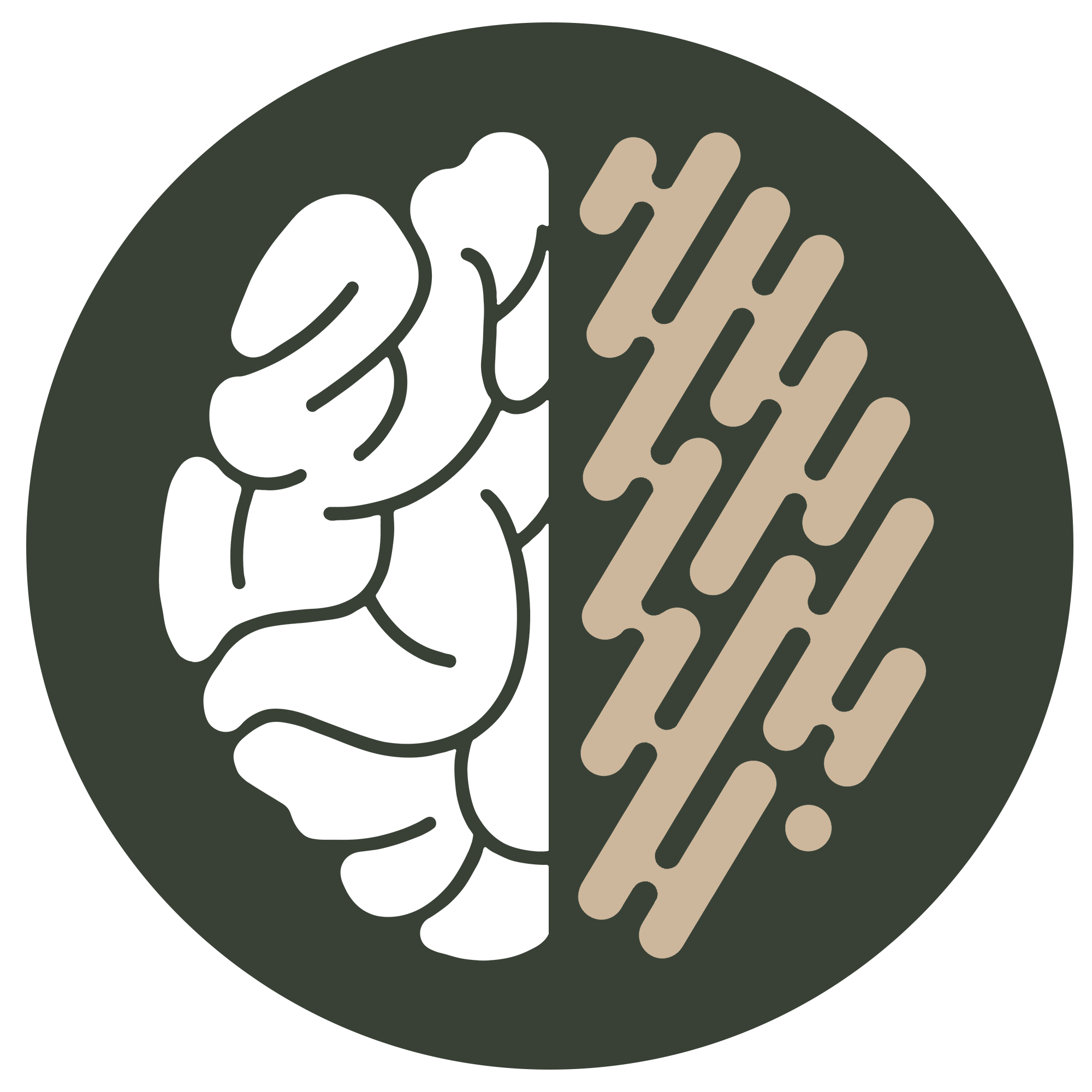Are You Fully Embracing Diversity of Thought?
Neurodivergent individuals bring transformative strengths to the workplace, reshaping traditional management practices. Neurodivergence – encompassing conditions like ADHD, Dyslexia, Autism, and OCD – offers unique perspectives, unparalleled creativity, and innovative problem-solving abilities. Yet, despite these strengths, nearly half of managers admit they would not employ someone who is neurodivergent.
The statistics are stark:
30-40%
of neurodivergent individuals in the UK are unemployed
26.2%
of individuals with specific learning disabilities are in employment in the UK
29%
of autistic individuals are in employment in the UK
This represents not just a social inequity but a missed opportunity for organisations to tap into a vast, underutilised talent pool.
To harness the full potential of neurodivergent talent, organisations must go beyond ticking boxes. It requires fostering inclusive policies, creating supportive environments, and understanding how to leverage the unique strengths neurodivergent employees bring to the table.
In this blog, we’ll explore the incredible value neurodiversity adds to the workplace, the barriers preventing organisations from capitalising on this talent, and actionable strategies for driving meaningful change.
Understanding Neurodiversity in the Workplace

Neurodiversity refers to the natural variation in ‘Cognitive Operating Systems’ present throughout our population.
Approximately 15-20% of the population is neurodivergent, highlighting a largely untapped talent pool that organisations could leverage to address skill shortages. Neurodivergent individuals often think, process information, and approach tasks, in ways that differ from their neurotypical peers.
For example, ADHD individuals can exhibit higher levels of creativity and energy but may struggle with attention to detail. Autistic individuals may excel in tasks requiring pattern recognition or systematic thinking but could find social interactions distressing.
Harnessing these unique talents requires collaboration between leaders and employees to find suitable accommodations which reduce the impact of their challenges, so their strengths can shine.
Studies show diverse teams are often more innovative and out-perform homogeneous ones. A 2017 study by Harvard Business Review revealed companies prioritising diversity of thought are 45% more likely to improve their market share. Encouraging neurodivergent talent to thrive within an organisation could lead to similar boosts in productivity and creativity.
The Benefits of Neurodivergent Talent
The potential contributions of neurodivergent individuals are limitless. We’ve outlined a few notable strengths commonly found in neurodivergent professionals below:
Enhanced Creativity
Dyslexic or ADHD individuals, for instance, are often highly creative thinkers. Research has shown ADHD individuals tend to generate a higher number of original ideas than their neurotypical counterparts. This creative edge can be invaluable in industries prioritising innovation.
Attention to Detail
Many Autistic or OCD individuals demonstrate an exceptional ability to focus on intricate details and detect patterns others may overlook. This can be especially beneficial in fields like data analysis, engineering, and quality control.
Problem-Solving Abilities
Neurodivergent individuals may approach problem-solving from a unique angle. Their lateral, or “out-of-the-box", thinking patterns allow them to devise unconventional solutions to complex challenges.
Loyalty and Commitment
Neurodivergent employees often show high levels of dedication and perseverance. With the right support, they tend to stay longer with organisations, helping to reduce turnover costs and hugely boost your brand reputation.
Three Systemic Barriers to Harnessing Neurodivergent Talent
1. The Recruitment Challenge
Despite the significant benefits of recruiting neurodivergent talent, many organisations still struggle to adapt their recruitment processes to be more inclusive. Research shows that 48% of neurodivergent candidates feel that current recruitment practices are unfair. These barriers often stem from ingrained biases in traditional hiring methods, which favour neurotypical candidates and overlook the unique strengths neurodivergent individuals bring to the workplace.

Here are some of the challenges organisations face when recruiting/attracting neurodivergent talent:
- Lack of Training: Only 15% of organisations provide managers with neurodiversity or inclusive interviewing training. Without proper training, unconscious biases persist, and managers may misjudge candidates’ potential.
- Exclusionary Job Descriptions: Job adverts often use jargon and emphasise personality traits irrelevant to the role, discouraging neurodivergent candidates from applying.
- Traditional Interviews: Standard interviews focusing on social interaction can disadvantage autistic candidates or others who may struggle in such settings, despite being fully qualified. Studies have shown that neurodivergent individuals may struggle with traditional interviews but thrive in environments where their skills are tested practically.
For organisations to harness and attract neurodivergent talent, they must first reevaluate their current recruitment practices. Here’s how:
- Audit current and past job adverts for ambiguous language and unnecessary requirements related to personal characteristics.
- Invest in neurodiversity training for hiring managers and recruiters so they can learn and adopt inclusive methods for recruitment processes.
- Implement skill-based assessments and consider alternatives to traditional interviews.
2. Lack of Accommodations
Implementing workplace accommodations, or reasonable adjustments, for neurodivergent employees is not just a legal requirement, but an imperative for harnessing neurodivergent talent. These adjustments don’t need to be expensive or disruptive but should be tailored to individual needs. Unfortunately, many organisations either fail to recognise the importance of accommodations or lack the knowledge and resources to implement them effectively.
According to Birkbeck University research, only 29.9% of employees have formal workplace adjustments in place. This oversight prevents neurodivergent employees from reaching their full potential, leading to disengagement, decreased productivity, and even attrition.

Why Accommodations Matter
Accommodations play a dual role: they minimise the barriers neurodivergent employees face and create opportunities for their strengths to shine. When tailored to an individual’s specific needs, accommodations can drastically improve an employee’s ability to contribute effectively to the organisation.
For example:
- An autistic employee working in an open-plan office may find the sensory environment overwhelming. A simple adjustment, like providing noise-cancelling headphones or access to a quieter workspace, can significantly enhance their focus and productivity.
- A dyslexic employee struggling with written communication might benefit from speech-to-text software or additional time to review documents, enabling them to deliver high-quality work without unnecessary stress.
It’s important to recognise that accommodations are not ‘One-Size-Fits-All’. The diversity within neurodivergence means there is no universal solution. Accommodations must be highly personalised, as the needs of one individual with ADHD may differ vastly from another with the same condition. Open and ongoing communication between managers and employees is key to understanding and meeting these unique requirements.
By prioritising accommodations and creating a truly inclusive environment, organisations can harness the full potential of neurodivergent talent, driving innovation, engagement, and reducing attrition.
3. The Knowledge Gap
A significant barrier to harnessing neurodivergent talent lies in the lack of education and training around neurodiversity within organisations. Many leaders, HR professionals, and managers remain unaware of how to effectively attract, retain, and support neurodivergent individuals. This knowledge gap not only hinders inclusion but also limits organisations from tapping into a valuable talent pool.
The Issues This Creates
Missed Opportunities: Without an understanding of neurodivergence, organisations overlook or misinterpret the unique contributions neurodivergent employees can bring.
High Turnover Rates: Neurodivergent employees often leave roles due to a lack of support, costing organisations valuable talent and increasing recruitment expenses.
Reduced Innovation: Failing to capitalise on neurodivergent perspectives means organisations miss out on the creative problem-solving and innovation they offer.
How to Fix the Knowledge Gap
Invest in Education: Provide comprehensive neurodiversity training for all employees.
Develop Internal Champions: Appoint neurodiversity champions within the organisation who can advocate for inclusion and act as a resource for colleagues.
Collaborate with Experts: Partner with organisations specialising in neurodiversity to gain insights, develop training programmes, and access resources tailored to your needs.
By bridging the knowledge gap, organisations can build a culture that values and supports neurodivergent talent, paving the way for long-term success.
Conclusion
Harnessing neurodivergent talent is far more than a diversity checkbox; it’s about recognising and valuing the unique contributions neurodivergent individuals bring to the workplace. As organisations face increasing talent shortages, it’s time to reflect on whether current practices and policies are genuinely inclusive or unintentionally restrictive.
Consider the analogy of an escape room: if everyone involved thinks the same way, the likelihood of solving the puzzle is slim. However, by introducing individuals with diverse perspectives and approaches, the chances of success rise significantly. The same principle applies to organisations, if we only seek to attract and retain the same type of talent, we limit diversity of thought, innovation, and ultimately, our potential for success.
By rethinking recruitment practices and fostering a supportive, flexible, and inclusive environment, organisations can uncover the unparalleled creativity, attention to detail, and problem-solving abilities of neurodivergent professionals. It’s not just a moral imperative, it’s a strategic advantage in building resilient, innovative, and future-ready teams.
The question is: will your organisation seize the opportunity to lead the way in embracing neurodiversity, or risk being left behind?
Ready to Build a Neuroinclusive Workplace?
Take the first step toward inclusivity by opening the door to diverse strengths.
Let NeuroBridge® help you create a fair and inclusive workplace where diversity of thought can thrive.



